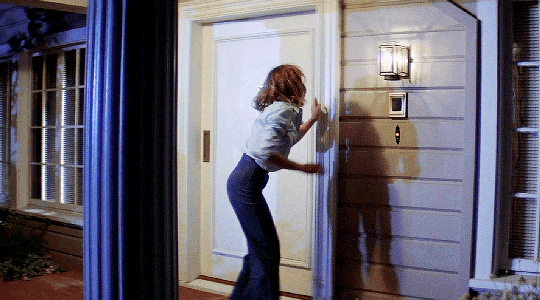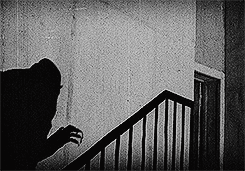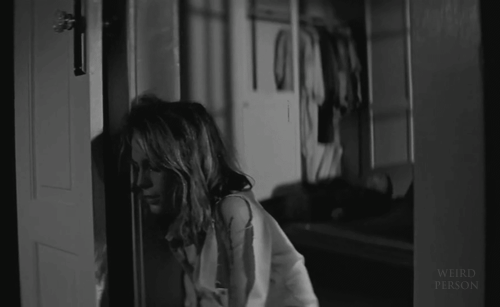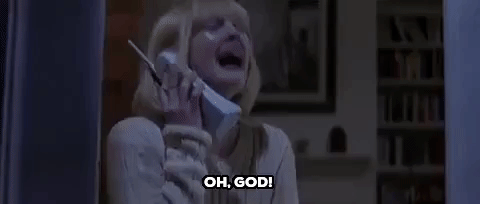
Alone in the Dark
Isolation in the Horror Genre
Alone Again, naturally...
Have you ever finished reading a hair-raising story, or watching a horror movie, and had an eerie feeling settle on your shoulders?
Suddenly, the once serene and peaceful quiet of your empty home becomes heavy and suffocating. Your heart rate increases and your blood runs cold as your ears unconsciously strain to detect the most minuscule of sounds.
You may pass this feeling off as a simple case of paranoia, left over from the exhilaration and terror of what you’ve just read or watched.
And while it’s true that your recent encounter with the horror genre has left you feeling paranoid, it's also made you aware of something you hadn't been conscious of before; how painfully alone you are.
Now, alert to this feeling, you've begun to experience the
familiar fear of isolation.
Kendall Phillips provides us with an example of this “familiar” feeling through his recount of the first time he watched the 1978 film Halloween.
He distinctly remembers being the “most horrified” when Laurie Strode (Jamie Lee Curtis) was being chased through the neighborhood by the killer Michael Myers, and how her neighbors ignored her banging on doors and screaming for help.
~Start watching at 2:40 until 3:05 for the scene we're discussing~
Phillips reflects that, while Laurie’s terrified flight through a neighborhood of closed doors was wildly fantastical, it was “not entirely alien to [him].” (Phillips 2) He goes on to explain how scenes like this are what film theorist Robin Wood would call “collective nightmares,” due to a particular film “captur[ing] our cultural anxieties and concerns.” (Phillips 3)
This relates back to Fahy’s statement of “scar[ing] us in familiar ways,” as Phillips recounts a scene that, while fake, is filmed and presented such a way that viewers won’t “question” the location, and will, instead, resonate more with the fear that is being presented to them; the fear of being alone, or isolated (Fahy 11).
Isolation is a fascinating trope that, while existing within several genres, is prevalent within the genre of horror. Horror, as a literary genre, creates, inspires, and fosters feelings of fear, dread, repulsion, and terror in the audience. Isolation is the act of being “set apart from others” and of being “alone.” (“Isolated”)
It can be represented and depicted in a number of ways: it can be self-imposed or forced upon a character; an individual can be isolated because of a disability; isolated due to a difference in, or lack of, communication; or they can be physically, mentally, or emotionally isolated from others.
As Thomas Fahy notes in the introduction to The Philosophy of Horror, works of the horror genre, such as novels and films, are generally “frightening in ways that do not challenge us to question [these works], our response to them, or the worlds they represent… [as] these works scare us in familiar ways.” (Fahy 11)
Works of the horror genre push the limits of human emotion and fear by unearthing our deepest nightmares and anxieties, and then displaying them before our eyes.
This action, of putting words, images, and music to our deepest fears, is what Fahy means by “scar[ing] us in familiar ways,” and the presence of isolation is a perfect example of this (Fahy 11). Audiences are familiar with the feeling of being alone and, while some people may find comfort in these solitary moments or feelings, everyone is intimately familiar with the crawling sensation of dread and fear that often accompanies isolation.
The scene from Halloween subjected viewers to watching Laurie run through a heavily populated neighborhood where, despite her banging on doors and crying for help, she is forced to face Michael Myers on her own.
As Fahy and Phillips suggested, viewers are presented with a familiar environment, such as a heavily populated neighborhood, and a popular fear and anxiety; that despite being surrounded by onlookers and prospective help, one still may be forced to face the evil force alone.
This is a fantastic example of isolation, as Laurie is isolated from any potential help by an outside force, that of her neighbors being unwilling to assist her, thus leaving her alone to fight Myers. Despite Laurie having the company of the children inside the house, they hide in the bathroom while she attempts to kill Myers. Ultimately, they are of no help in the fight and leave Laurie to find help.
This, once again, leaves Laurie to fight Myers entirely on her own. This specific scene in Halloween provides us with a perfect example of what I’m going to be looking for in my analysis of works in the horror genre.
I’m interested in the role that isolation plays within the genre of horror, and want to look at how it’s depicted, represented, and presented in the novels Dracula and Frankenstein, and in the films Alien (1978), Scream (1997), and Hush (2016).
So turn on the lights and lock your doors,
it's about to get bloody!






